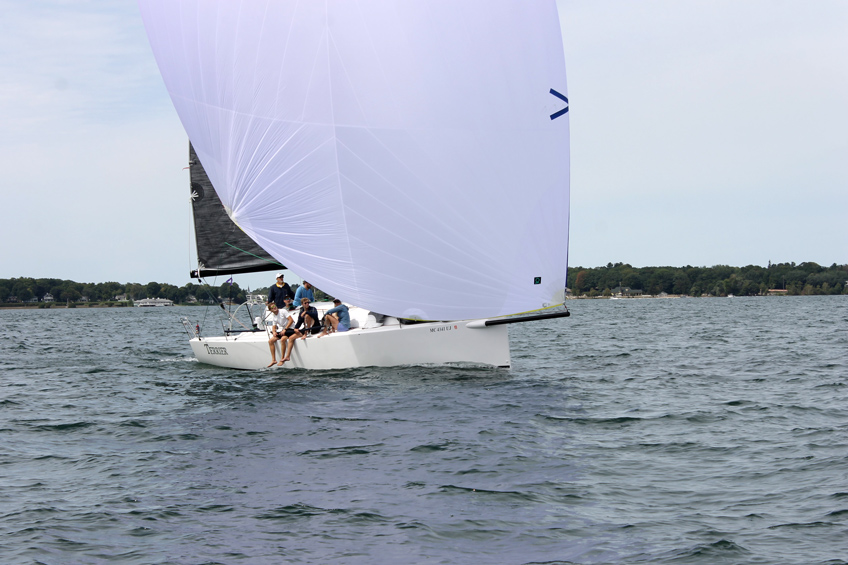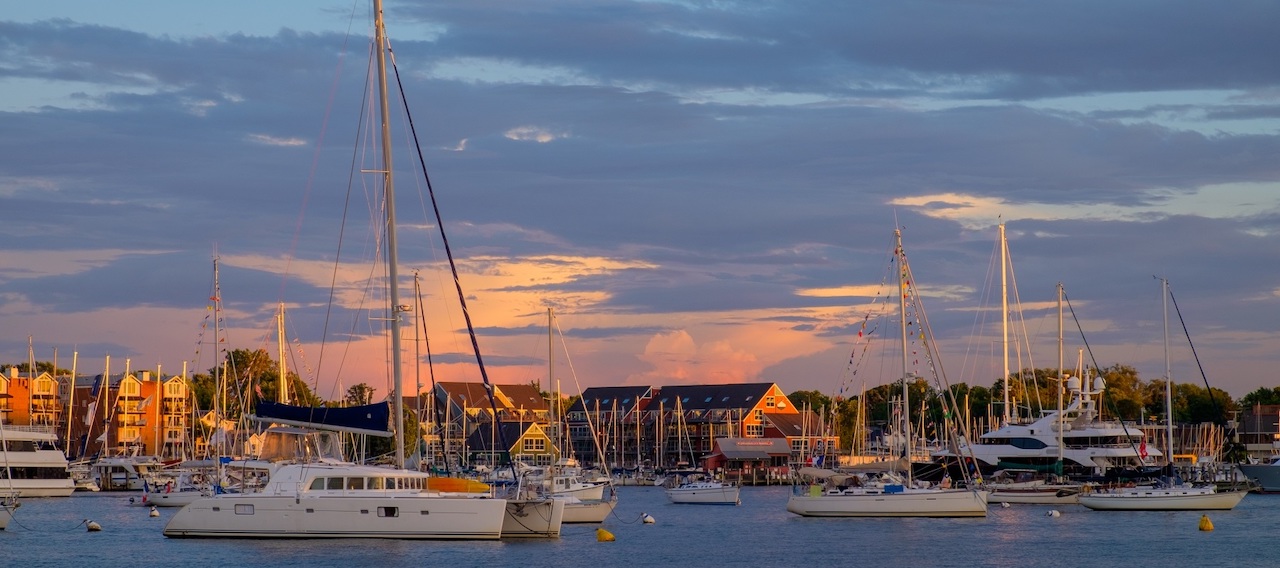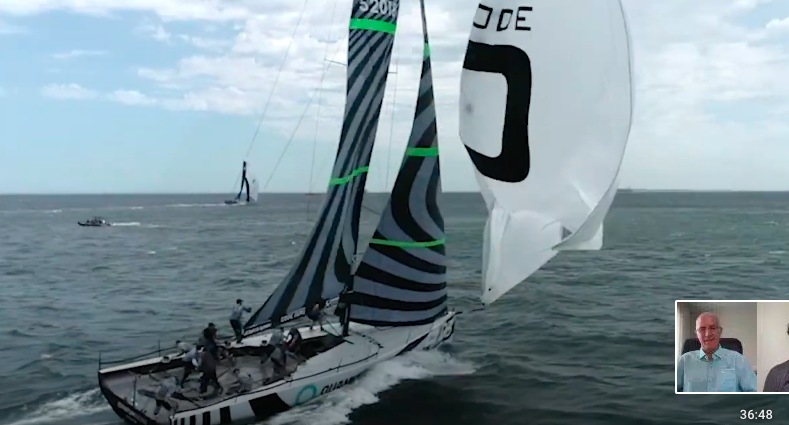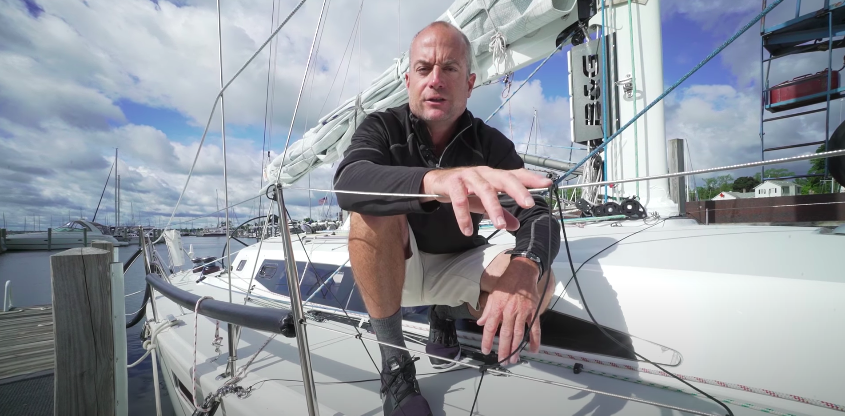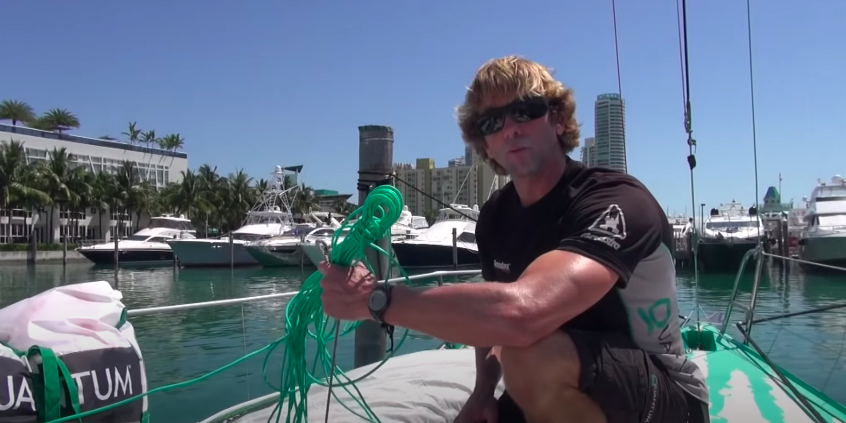On the J/111 and others like it, you should have three modes in your back pocket while racing. The J/111 is sensitive to adjustments in rig and trim; when the wind changes in velocity, how the boat is sailed should change as well.
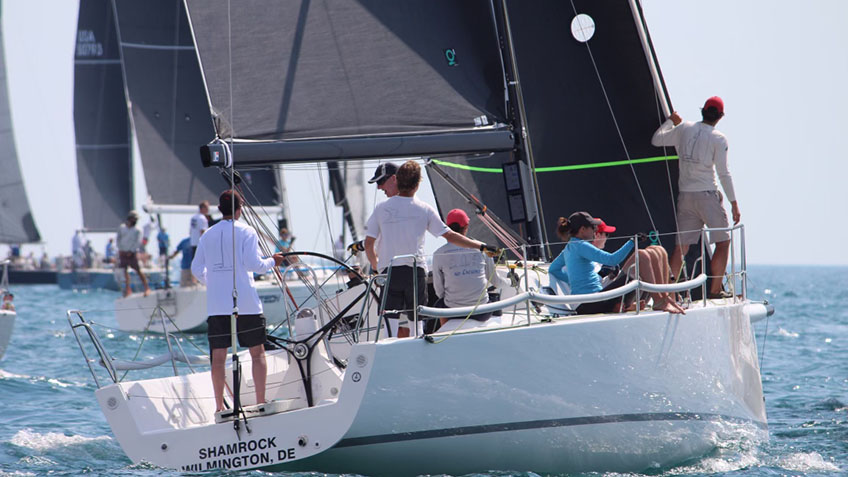
MODE #1: NEED POWER
Need Power (0-5 kts): In exceptionally light winds of under 5 kts, the goal is to complete sail flow by keeping the wind attached to the sails from luff to leech on both sides. If the entry is too round, the wind molecule on the leeward side falls off and stalls the sail. The same problem can happen if the exit is too round.
In light winds the entry on both the main and jib needs to be less round, with more of an arc shape and a clean exit. The telltales on top of the main and on the jib should fly 100 percent of the time.
Need Power Checklist (0-5 kts)
- 10˚ of heel and -1 degree of bow down trim
- Telltale on upper third of jib 100% flow, telltale at top batten of main 100% flow
- Horizontal wrinkles on luff of both sails for finer entry angle
- Two-thirds of the crew below, forward, and to leeward (low weight, clean slot)
- Two steps below base on the rig
- Headstay off 15 turns from base (promote mast bend without backstay)
- D1 and D2 off 4 turns (help bend mast and promote mast sag, 25% of headstay sag)
- Jib inhaul 70% and main traveler up 100%
- Jib lead forward one number and outhaul off 20%
- Backstay and vang off
- Helmsman steering to leeward and watching mid luff telltales (In light air, the wind is further forward high.)
- Jib trim to leeward (not cross sheeting)
- Main trimmer by companion area
- Helmsman steering using mid-luff telltales and true wind angle (TWA) and apparent wind angle (AWA)
Need Power (6-8 kts): As the wind increases to the 6-8 kts range, the boat shifts into the upper range of the need power mode. Now is the time to adjust the rig and trim to create the perfect amount of drag without stalling. In this mode, the crew usually starts on the windward side against the cabin with two people in front of the shrouds. The goal is to be the first team hiking on the windward side.
Need Power Checklist (6-8 kts)
- 10˚ of heel and -1 bow down trim
- Top telltale on jib 100% flow, top telltale on main 25% stall
- Horizontal wrinkles on luff of both sails for finer entry angle
- Crew to windward against cabin with two in front of shrouds
- One step below base rig setting
- Headstay off 10 turns from base and D1 and D2 off 3 turns from base
- Jib inhaul in 100% and jib lead back one number
- Main traveler up 100% and outhaul off 10%
- Backstay and vang off
- Helmsman steering from windward using telltales low and target speed
- Jib trim to windward viewing sheet numbers by leeward winch
MODE #2: PERFECT POWER
Perfect power is the ideal sailing condition and the easiest to sail for most teams. The wind speed is usually around 9-13kts and all sails are trimmed as designed. The crew is on the windward side hiking, while the entire team is focused on sailing the boat at the proper target speed and angle. Little changes can make big gains in this base range. Trimming sails and steering to a narrow target speed−6.9-7.1, not 6.7-7.3−will make the difference in this condition.
Perfect Power Checklist (9-13 kts)
- 10-15˚ of heel with 0 bow down trim
- Top telltale on jib flow 100% and main telltale stalling 50%
- Luff on both sails should be smooth with no horizontal wrinkles
- Crew hiking to windward with one in front of shrouds
- Rig is at base settings
- Jib inhaul in 100%, lead back one number (base setting)
- Main traveler up 75% (starting to use fine trim)
- Backstay and vang on 50%
- Helmsman steering on lower telltales and target speed
- Jib trimmer to windward with sheet in hand and handle in winch
MODE #3: TOO MUCH POWER
Too Much Power (14-18 kts): As the wind increases to 14-18 kts, the “too much power” range kicks in. In this range, you start reducing the drag in the rig setup and sail trim. Opposite of the sail shape in the 0-5 kts range, the entry at this range needs to be round and the sail shape flatter with a straight exit.
The J/111 is fun to sail in this condition. As a helmsman, the goal is to keep a constant heel angle while the trimmers are adjusting the trim to keep a constant target speed for the optimum heel. In flatter water, the heel number is 18 degrees, yet as the waves increase the heel should max out at 22.
Too Much Power Checklist (14-18 kts)
- 18-22˚ of heel and 0 fore and aft trim
- Top telltale on jib and main flowing 100%
- Luff on both sails set firm to promote round entry angle
- Crew hiking to windward with everyone behind shrouds
- Rig set one step above base, 2 turns on the V1 and D1 shrouds
- Jib inhaul on 75% and main traveler at 50% (mid traveler)
- Backstay and vang on 80%
- Jib lead back one number and outhaul on 100%
- Helmsman steering on heel angle and target speed
- Jib trimmer hiking to windward with sheet in hand
- Main trimmer moves jib handle once eased for breeze
Too Much Power (19-25 kts): In this range, you’re nearing the top end of racing comfortably in a J/111. With great boat handling, 19-25 kts true wind in a J/111 can be a lot of fun. The goal is to set sails with open exits while maneuvering the boat at the proper heel angle. Not only will the crew move aft a bit to lift the bow, but the weight below will also be placed further aft to help keep the bow further out of the water.
Too Much Power Checklist (19-25 kts)
- 18-22˚ of heel angle with bow up +1 degree
- Top telltale on jib and main 100% flowing
- Luff tension on both sails firm, using Cunningham on main
- Crew hiking out to windward one body aft of Section 1
- Rig setting two steps above base, +5 turns on headstay and +4 on V1 and D1 and +2 on D2
- Jib inhaul on 50% and main traveler up 50%
- Backstay and vang on 100%
- Jib lead back one number and outhaul on 100%
- Helmsman steering on heel angle and target speed
- Jib trimmer hiking yet easing sail with puff (jib trimmer should ease first then main second)
All boats can benefit from fine-tuning their three modes of trim. Prior to the race, determine if the boat needs power, is perfect, or has too much power. First adjust the rig for the wind, then the sails. If the rig, sails, and crew adjust for the change in wind speed in each mode, a team will be rewarded with a spectacular sailing experience.
For more information on how to set up the three modes for your boat, contact Wally Cross.
Article from Quantum Sails.
Three modes downwind can be found here: https://www.sailjuice.com/articles/three-modes-downwind
